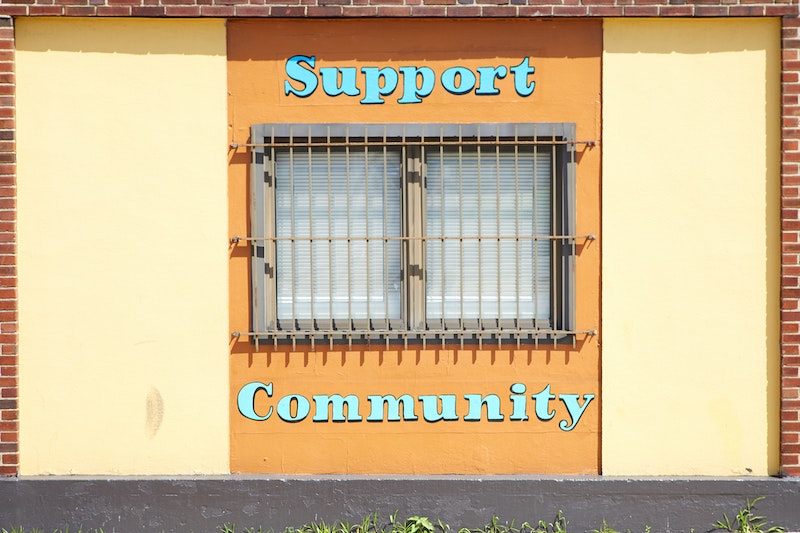Bipartisan Beginnings for Opportunity Zones
Whichever side of the political aisle you are on, we can all agree that there has not been much in the last decade Democrats and Republicans have...
4 min read
 Jake DeVine
:
Apr 19, 2022 3:45:00 AM
Jake DeVine
:
Apr 19, 2022 3:45:00 AM

There are many champions and many skeptics of the Opportunity Zone (OZ) program. Will it bring lasting positive economic impact to struggling communities, or will it only benefit investors?
The success or failure of the Opportunity Zones program will depend on the long-term impacts its developments have on distressed communities across the nation. While profits and losses to investors are easy to demonstrate on balance sheets, how do you measure real and lasting social impact? Tangible measures of impact to communities in census tracts designated as Opportunity Zones must be defined to show that the program is working and is not bringing unintended consequences. To achieve the basis for these metrics, many banks and investors have turned to a document called Guiding Principles and Reporting Framework for Opportunity Zones (OZ Framework). In this article, we will discuss how this framework came into existence, what metrics it recommends measuring, and how this shared framework benefits communities and investors alike.
The ultimate goal of the Opportunity Zones initiative is to bring measurable and long term impact to distressed communities, while also maximizing economic returns to the banks, developers and investors injecting capital into OZ projects. The Beeck Center for Social Impact & Innovation at Georgetown University, founded in 2014, aims to “provide training and experimental opportunities for students, faculty, and global leaders to enact solution-based social change.” (global.georgetown.edu). In 2018, the Beeck Center formed a partnership with the US Impact Investing Alliance and the Federal Reserve Bank of New York with the purpose of designing a guide to help all players in the OZ marketplace ensure that their capital is working to address economic needs in distressed communities.
The Beeck Center and their partners held sessions with a group of more than 50 organizations who are stakeholders in the OZ space. Participants included developers, community development advocates, investors and policymakers. The group was tasked with strategizing methods to ensure that the Opportunity Zone program creates economic development in an inclusive way, supporting meaningful change in distressed census tracts. The result of these sessions was the formation of the Opportunity Zone Investor Council in June of 2019. The council was originally developed with 15 members: investors, developers and OZ fund managers. The council shared best-practices, ideas for how to create positive change, and methods to engage all OZ stakeholders to work together to make the program successful.
The Opportunity Zone Investor Council stated that they believed all OZ stakeholders must focus on 5 guiding principles to make a dent in economic inequality while avoiding unintended consequences of OZ investment and development:
The Opportunity Zone Investor Council laid out specific metrics that should be collected and analyzed to monitor the progress of OZ investments. This data will be useful in the development of a working set of best practices for the entire Opportunity Zone landscape, providing a ‘big picture’ for the overall impact of OZ investments. This is data aggregated at the start of a project, related to the fund itself, its participants, and the research on the community the project aims to impact.
Prospective Information:
Basic Fund Demographics:
Community Engagement:
The OZ Framework recommends tracking both transaction-level data and actual, measurable community impact data. It is suggested that the reporting of this data be in a common standard to allow regional and national aggregation.
Transaction Data Reporting
Core Community Impact
Additionally, it is recommended that fund managers measure and report facts specific to the investment goals of the project. When possible, they should use validated third-party methodologies.
For OZ investments to achieve the long term goals they are intended to create, it is critical for fund managers to plan and prioritize responsible investment exit strategies. Responsible exits should be planned for from the initial concept of the investment thesis. If and when possible, the OZ Framework suggests offering stakeholders the first right of refusal of purchase or lease, employee stock ownership option plans for businesses, and exit plans that will offer management continuity. When these options are not possible, a broad commitment by the fund managers to preserve community wealth will be beneficial, with or without specific actions stated.
If all stakeholders in OZ investing work together to provide meaningful and accurate data to show positive community and economic outcomes from OZ projects, it will be easy to demonstrate that the program is a success. While measuring social change by data is just a piece of the larger picture, metrics that show a good increase in available affording housing and new job creation over several years will prove to be a good indicator of community impact. If the implementation of the OZ Framework can show these improvements to policymakers, perhaps we will see traction for more bipartisan support of renewing the OZ program in the future.
Are you an accredited investor looking to invest a capital gain in an Opportunity Zone? Check out our Fund Finder and match with the perfect fund for your investment, today.
*Important Notice: OZ FundHub is not a licensed tax or accounting firm. All Information contained is for educational purposes only.*

Whichever side of the political aisle you are on, we can all agree that there has not been much in the last decade Democrats and Republicans have...

Does half the story count as the truth?

Long before the federal government designated 8,764 low-moderate-income (LMI) census tracts as Opportunity Zones with unprecedented tax benefits for...